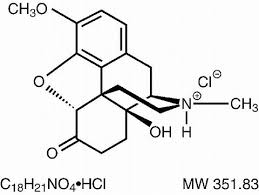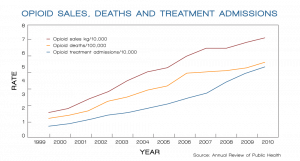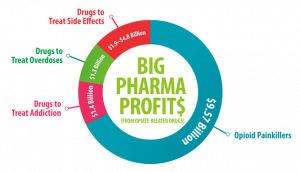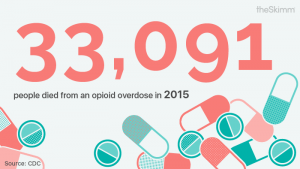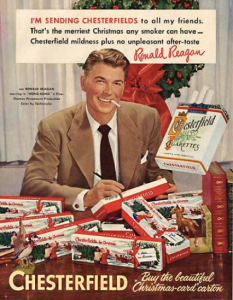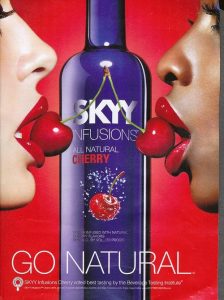To sleep as if we were babies, a bear hibernating, or on a vacation on the beach, or like you hadn’t seen your bed in days, or even weeks, or if you were a parent and dropped the kids off at their grandparents house for the entire weekend, or simply just take zzz quill as that’s apparently the solution to getting the sleep we desperately need and want. The ad ensures that as a consumer you will sleep easily, soundly, and wake refreshed because sleep is a beautiful thing we need. I chose this ad because I can relate to losing sleep as many of us can and wishing for those ideas of sleeping like a baby or on a vacation somewhere on a beach but also because I have taken this product and definitely don’t feel like I got the best sleep of my life or woke up refreshed for the next day.
The company that produces ZzzQuil, is VICKS. VICKS slogan is that their legacy is about more than just cold and flu medicine. It’s about giving families the opportunity to continue life- even on sick days- for more than 100 years (VICKS History). VICKS is well known for it’s cold and flu medicine along with DayQuil and NyQuil. VICKS has been around since the late 1800’s when a pharmacist named Lunsford Richardson created and sold Croup and Pneumonia Salve under the VICKS name. In 2012, VICKS came out with a non habit forming sleep aid in ZzzQuil. ZzzQuil came out in warming berry liquid and liquid caps for those occasional sleepless nights. In 2015, Zzzquil came out with a new flavor in calming vanilla cherry and soothing mango berry.
VICKS has become a respected company for hundreds of years and they continue to have new products that come out for consumers. VICKS currently has out on the market is vapor rub, cough drops, cough syrup, nasal spray, NyQuil, NyQuil Severe, DayQuil, DayQuil Severe, and ZzzQuil.
The intended audience for VICKS products and more importantly ZzzQuil, is definitely hard working adults who could also be parents. With the many ads I’ve come across in magazines showed adults sleeping with some sort of saying such as “sleep like a rock” or “because sleep is a beautiful thing” and my favorite was a tweet post saying “SLEEP LIKE he finally proposed. And you have been dating for a decade. #SleepLike #engaged #shesaidyes” with a lady sleeping and a nice expensive ring on her finger. Magazines I’ve noticed these ads are in TIME, Glamour, Entrepreneur, Food Network, and VOGUE. All of these magazines are directed towards adults. All of these ads whether in the magazines or on a television commercial, they are reaching for people who are extremely tired and people who just need a break in life. I’ve noticed the commercials to run more so in the evening to night time which is tricky because people may be watching television when they can’t sleep and get the grand idea that they need to go and purchase this particular sleep aid.
The active ingredients in ZzzQuil is 50 milligrams of Diphenhydramine HCI. Diphenhydramine is a common ingredient in Benadryl which means the same drug that helps us with our sneezing and itching is also used for our disturbed sleep. However, ZzzQuil promotes that the drug is not habit forming and therefore not addictive per say. ZzzQuil offers a quick way to fall asleep and sleep a good seven to eight hours of uninterrupted sleep. With that I would beg to differ in that it is habit forming and therefore addictive because if someone is having the same issue every night and can’t sleep and they revert to taking ZzzQuil each night, they now have created a habit and therefore addicted. I would assume until the individual got used to the drug that they gained a tolerance for it and could abuse the sleep aide. I noticed that on the bottle, you have to peel back to find how much an individual should take as it’s not in plain sight and the commercials never speak of side effects although it’s clearly stated on the bottle. Those who are breastfeeding or pregnant should not use the product and any children under twelve should keep away from the product. Also if an individual is already using a drug that contains Diphenhydramine, to not use the product.
The advertisement techniques used for ZzzQuil are very catchy. Playing a commercial in the evening time into the night more frequently then during the day time. The two advertisements I show above with showing adults sleeping with some sort of saying such as “sleep like a rock” or “because sleep is a beautiful thing” and the tweet post saying “SLEEP LIKE he finally proposed. And you have been dating for a decade. #SleepLike #engaged #shesaidyes” with a lady sleeping and a huge engagement ring. Most of the images are of people soundly sleeping, peaceful, and relaxed. The video above is also very deceptive as it shows you everything you wish for when you are sleep deprived from sleeping like a baby, or a bear, or on a vacation on the beach, or like you hadn’t seen your bed in weeks or even months, and relating those feelings to what ZzzQuil can do for you giving you that promise that the drug can give you those images of having the best sleep of your life. And the slogan of “because sleep is a beautiful thing,” ensures that why are you up fighting your sleep when you can just take this pill or amount of liquid to solve all of your sleepless nights.
Overall I would have to say that the drug does work and helps the occasional sleepless nights. However, I wouldn’t recommend it for chronic sleepless nights. I’ve tried it before, only because I was sold on the “non habit forming” bright lettering and I wanted to avoid Nyquil as I wasn’t ill. It definitely assisted in putting me to sleep, however, I didn’t feel like I slept like a baby, or like I hadn’t seen my bed in weeks or months. I honestly still felt a little tired when I woke up but was thankful I was able to get some sleep. With the article by Alena Hall on “The Truth About Over-The-Counter Sleep Aids” I liked what she had to say in that taking sleep aids occasionally are fine, however, she begs the point on “do we really need these?” As it may be okay to take on occasional nights where you have no idea why you can’t sleep and have a big meeting or project due the next day however, once it becomes a nightly or weekly problem that it may be time to check into an individuals daily habits before reverting to a chemical solution (Hall). Eating a balanced meal, waking up at the same time every day, and setting a nightly regimen will help in going to sleep at a decent hour without the need of a sleeping aid. Therefore, I would recommend this drug only if someone had the occasional sleepless night but not a friend or family member who lacks sleep consistently. I wouldn’t want them to create a habit of taking it and potentially having a dependence on the drug to get adequate sleep.
References:
Diphenhydramine. (n.d.) Retrieved November 27, 2017, from http://medlineplus.gov/druginfo/meds/a682539.html.
Hall, Alena. (2015) The Truth About Over-The-Counter Sleep Aids. Healthy Living. Retrieved November 27, 2017 from https://www.huffingtonpost.com/2015/03/23/zzzquil-ingredients_n_6902780.html
Vicks History. (n.d). Retrieved November 27, 2017, from http://vicks.com/en-us/vicks-history.
Zzzquil Oral: Uses, Side Effects, Interactions, Pictures, Warnings & Dosing. (n.d.) Retrieved November 27, 2017, from http://www/webmd/com/drugs/2/drug-161075/zzzquil-oral/detail.







